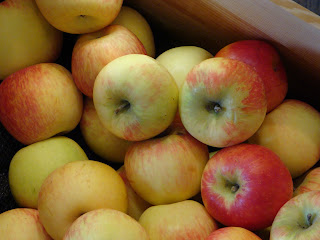 What better way of savoring the tastes of summer through the rest of the year, than making your own jam preserves and dried fruit? Making your own preserves is easier than you think, and makes a great hostess gift for your upcoming holiday parties.
What better way of savoring the tastes of summer through the rest of the year, than making your own jam preserves and dried fruit? Making your own preserves is easier than you think, and makes a great hostess gift for your upcoming holiday parties.Directions for Jam
What you need:
- Mason canning jars with self-sealing two-piece lids (available at stores such as Safeway)
- 4-6 cups Sugar
- 1 box of fruit pectin such as Sure-Jell or Certo
- High quality fruits as follows: Apricot-2 ½ lb. and 2 lemons, blackberry-2 qt., cherry-3 lb. orange marmalade-3 oranges, 2 lemons, peach or pear-3 lb fruit and 2 lemons, raspberry-4 pt., strawberry-4 pt.
Use firm, ripe fruit. Buy new, flat jar lids for a good seal, and always use clean jars. Wash thoroughly before starting process. Measure ingredients exactly, for altering the amount of sugar or fruit cause a set failure.
- Fill a large pot half-full with water and simmer.
- Wash jars and screw bands in hot, soapy water and rinse with warm water. Pour boiling water over flat lids and let stand in hot water until ready to use. Drain well before filling.
- Crush berries, peel and pit peaches, finely chop cherries, and pit and finely chop apricots with skins on.
- Measure exact amount of fruit as instructed by pectin recipe instructions.
- Measure the exact amount of sugar into a separate bowl.
- Stir sugar (amount according to pectin instructions) into fruit in a saucepan.
- Bring mixture to a full rolling boil on high heat, stirring constantly.
- Stir in pectin quickly and return to a full boil exactly 1 minute while stirring. Remove from heat and skim off any foam with metal spoon.
- Ladle quickly into prepared jars, filling to within 1/8 inch of topes. Wipe jar rims and threads. Cover with two-piece lids and screw on tightly. Add boiling water to cover jars by 1 to 2 inches. Cover with lid and bring water to a gentle boil. Process jams 10 minutes. After jars cool, check seals by pressing middle of lid with finger. If lid spring back, lid is not sealed and refrigeration is necessary.
- Let stand at room temperature for 24 hours. Sore unopened jams for up to 1 year, and opened jams up to 3 weeks.
Natural Sun Drying
- Dry in the sun by placing slices of food on a clean tray with sides and covering with cheesecloth or fine netting.
- If possible, place a small fan near the drying tray to promote air circulation.
- Drying times will vary.
- Turn food once a day. Dry until the food has lost most of its moisture (vegetables will be brittle; fruits will be chewy).
Oven Drying
- Dry food in an oven that can be maintained at 140 degrees F or lowest setting. Leave door ajar 2 to 3 inches. Place a fan in front of the oven to blow air across the open door.
- Spread the food in a single layer on racks or cookie sheet. Check food often. Turn food over to dry more evenly.
- Drying time will vary (Tables 2 and 3). Do not leave oven on when no one is in the house.
- When food is dehydrated 80 to 95% of the moisture is removed, making the dried weight of foods much less than the fresh weight.
- All sun-dried fruits and vegetables must be pasteurized to destroy insects. Place dried food evenly in shallow trays no more than 1 inch in depth. Vegetables should be heated at 150 degrees F for 30 minutes or 160 degrees F for 10 minutes. Fruits should be heated at 160 degrees F for 15 minutes.
- Dried fruits must be conditioned prior to storage. Conditioning is the process of evenly distributing moisture present in the dried fruit to prevent mold growth. Condition dried fruit by placing in a plastic or glass container, sealing and storing for 7 to 10 days. The dried fruit in the containers should be shaken daily to distribute moisture. If condensation occurs, place the fruit in the oven or dehydrator for more drying and repeat the conditioning process.
- Cool dried food should be placed in a closed container that has been washed and dried before storing. Home canning jars are good containers for storing dried foods. Store in a cool, dry, dark place.
- Dried foods should be used within 3 to 6 months as they will lose their flavor and color to some extent during storage
Written by Karen








